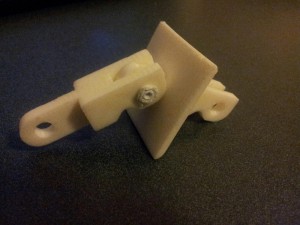Welcome to our updated version of the blog on the Dragon Spine Water-Lift project at the Dr. Sun Yat-Sen Garden! The past two weeks has given the team the time to work on constructing the water lift, and make an idea on paper into a reality. The following blog provides a detailed description of the implementation process, current evaluations of the project, and project outcomes.
Working in the Shop: Implementation Progress
Finding a location and tools to construct the water lift was the one of the main challenges part because a lot of finer and precise tools are needed to build the chain links and gears. Fortunately, we were able to get help from Dr. Nesbit which introduced us to Dr. Johnson of the architecture department. Dr. Johnson is able to contact the workshop director at SALA. After brief dialogue and a safety orientation, the team was given permission to assemble the water lift at the SALA workshop.
Earlier in the week, the wood required for the construction was purchased from Windsor Plywood. Chris took the materials back to White Rock, where a family acquaintance was able to lend various power tools, and sized the wood to create all of the individual components of the design. After many hours in the shop and countless wood cuts later, the raw materials were transformed into crafted components ready to be assembled into a final product. At present, the team is assembling the water lift and the platform, with the storage box already completed. Today, the team met together and worked in the SALA workshop to begin assembling and fitting individual components – the complex and highly finicky mechanism was starting to take shape. Current progress on the water lift assembly can be seen below in the figure.
The remainder of the weekend will be dedicated towards completing the assembly phase of the water lift. Several hours of work are still required to complete the task ahead, but the team is committed to ensure project success.
The Good, the Changed, and the to be Improved: The Evaluation
Previously we mentioned our indecision in selecting an ideal wood type. Between teak and mahogany, the later was selected and implemented into the construction of the water lift. Although teak is considered a superior crafting wood, the reduced cost, and more importantly, the increased availability and variability of mahogany gave it the upper hand. With the wood type selected, construction began with earnest and is currently approaching the final stages of completion.
From our previous concept design of the water lift, the chain links have undergone a slight modification. Inspection of the plan and a 3D print of the chain links revealed that the spacing of the paddles as well as the shape of the notches allowed for interference with the gear, sharply decreasing the efficiency of the lift. Amendments were made, including the notches taking a larger more rounded shape and an alteration of the overall chain size. Construction of the wooden chain link was recently completed and the changes between the current design and the previous concept art can be noticed in the picture below.
Although no current problems have arisen during construction of the water lift, we are well aware that a perfect project is rare and difficulties may arise in later stages of construction. In response, several accommodations were made to the water lift to account for any future errors. Gear teeth were made longer than necessary to account for sources of error and will be trimmed to appropriate length when required. Several extra chain links and paddles were also constructed in case of damage or a slight change of length in the water lift. These extras, if not required later in the construction phase, will also be provided to the client in case a replacement component is required.
What is to be Expected: Project Outcomes
The main purpose of this model water lift design and construction project is to provide an effective educational tool. The Dr. Sun Yat-Sen Garden wishes to promote the learning of classical Chinese inventions, history, and culture through concretely illustrating the tools and methods used hundreds of years ago.Furthermore, the project team believes this project will serve to spark an interest to further understand how the water lift operates, and encourage youth to explore the possibilities for a future of engineering and design. The project outcomes are set to reflect and contribute towards this end goal. Other contributing factors were taken into account for the project outcomes such as aesthetics and storability to enhance the quality and protect the longevity of the project. Listed below is a detailed set of project outcomes to be completed in order to ensure the project is fully successful in achieving its purpose:
– Functional scale model of a Chinese Dragon Spine Water Lift
-
Able to elevate water effectively through a hand crank
-
Aesthetical and effective demonstration tool
– Platform to display the water lift that contains a reservoir of water
– Storage container to provide proper storage capabilities for the design

